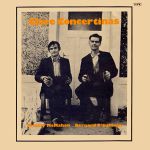User:WikiSysop/Test page: Difference between revisions
No edit summary |
No edit summary |
||
| Line 1: | Line 1: | ||
{{Tune of the week | {{Tune of the week | ||
|f_tune_of_the_week= | |f_tune_of_the_week=Humors_of_Ennistymon_(1)_(The) | ||
|f_mp3_track= | |f_mp3_track=Hartigan's Fancy.mp3 | ||
|f_artwork= | |f_artwork=Clare Concertinas.jpg | ||
|f_aw_px= | |f_aw_px=150 | ||
|f_player_px=330 | |f_player_px=330 | ||
|f_tune_name= | |f_tune_name=Humors of Ennistymon | ||
|f_played= | |f_played=Trad Tune Collection | ||
|f_notes= | |f_notes=Clare Concertinas | ||
|f_source=Soundcloud | |f_source=Soundcloud | ||
|f_section=abc | |f_section=abc | ||
|f_article= | |f_article=The name Ennistymon is derived from the Irish ''Inis Díomáin'', or (St.) Diomán's Island, and is locally pronounced 'Ennis-sty-mun'. The tune is one of a large tune family whose most famous member is perhaps "Larry Grogan." Seán Keane was of the opinion it was a Clare tune, and indeed, Ennistymon is a town in North Clare. In the liner notes for the album "Clare Concertinas: Bernard O'Sullivan and Tommy McMahon," Muiris Ó Rochain writes that County Sligo/New York fiddler Michael Coleman adapted the tune "[[Coppers and Brass (2)]]" by adding a third part, the whole of which he renamed "The Humours of Ennistymon." Ó Rochain thinks this was in honor of Martin Clancy, a native of Ennistymon. Gearóid Ó hAllmhuráin (1999) believes that travelling piper Johnny Doran popularized the tune in Clare in the 1930's and 1940's, playing it as "Coppers and Brass," and that it is thought in Clare that Doran composed the third part of the tune. Micho Russell (1915-1944), tin-whistle player and a storehouse of folk tales and traditional lore, had his own fanciful thoughts and associations about the tune, which he would relate by way of introduction of the music. "There's a jig called 'The Humours of Ennistymon' and Captain O'Neill in Chicago, the music collector, had only two parts got in his collection. So he met a man from Ennistymon and the man from Ennistymon had the third part. So I think that was one of the reasons that it was called 'The Humours of Ennistymon'" (Piggott, '''Blooming Meadows''', 1998). The tune appears in O'Neill's '''Music of Ireland''' (1903) as the two-part "[[Hartigan's Fancy]]." In fact, both tune and title appear older than O'Neill and the above-referenced 20th century musicians, since "Humours of Ennistymon" appears in the James Goodman manuscripts (volume III, 152), collected by James Goodman from the playing Munster musicians in the mid-1800's, predating all the above references. James Aird (c. 1790) published a variant as "[[Lasses of Melross (The)]]." Breathnach remarks that the first printed version was by John Walsh before 1736 in '''Country Dances Book the Second''' under the title "[[Larry Grogan]]," named for the County Wexford gentleman piper of the early-mid 1700's (there are two "Grogan" variants, however, "Ennistymon" is closer to the "[[Larry Grogan (3)]]" version). See also note for "[[Groom]]." | ||
}} | }} | ||
Latest revision as of 16:51, 20 March 2020

Played by : Trad Tune Collection
Source : Soundcloud
Image : Clare Concertinas
The name Ennistymon is derived from the Irish Inis Díomáin, or (St.) Diomán's Island, and is locally pronounced 'Ennis-sty-mun'. The tune is one of a large tune family whose most famous member is perhaps "Larry Grogan." Seán Keane was of the opinion it was a Clare tune, and indeed, Ennistymon is a town in North Clare. In the liner notes for the album "Clare Concertinas: Bernard O'Sullivan and Tommy McMahon," Muiris Ó Rochain writes that County Sligo/New York fiddler Michael Coleman adapted the tune "Coppers and Brass (2)" by adding a third part, the whole of which he renamed "The Humours of Ennistymon." Ó Rochain thinks this was in honor of Martin Clancy, a native of Ennistymon. Gearóid Ó hAllmhuráin (1999) believes that travelling piper Johnny Doran popularized the tune in Clare in the 1930's and 1940's, playing it as "Coppers and Brass," and that it is thought in Clare that Doran composed the third part of the tune. Micho Russell (1915-1944), tin-whistle player and a storehouse of folk tales and traditional lore, had his own fanciful thoughts and associations about the tune, which he would relate by way of introduction of the music. "There's a jig called 'The Humours of Ennistymon' and Captain O'Neill in Chicago, the music collector, had only two parts got in his collection. So he met a man from Ennistymon and the man from Ennistymon had the third part. So I think that was one of the reasons that it was called 'The Humours of Ennistymon'" (Piggott, Blooming Meadows, 1998). The tune appears in O'Neill's Music of Ireland (1903) as the two-part "Hartigan's Fancy." In fact, both tune and title appear older than O'Neill and the above-referenced 20th century musicians, since "Humours of Ennistymon" appears in the James Goodman manuscripts (volume III, 152), collected by James Goodman from the playing Munster musicians in the mid-1800's, predating all the above references. James Aird (c. 1790) published a variant as "Lasses of Melross (The)." Breathnach remarks that the first printed version was by John Walsh before 1736 in Country Dances Book the Second under the title "Larry Grogan," named for the County Wexford gentleman piper of the early-mid 1700's (there are two "Grogan" variants, however, "Ennistymon" is closer to the "Larry Grogan (3)" version). See also note for "Groom."
...more at: Humors of Ennistymon - full Score(s) and Annotations
X:1 T:Humours of Ennistimon T:Humours of Ennistymon[1] M:6/8 L:1/8 R:Jig S:James Goodman (1828─1896) music manuscript collection, S:vol. 3, p. 152. Mid-19th century, County Cork F:http://goodman.itma.ie/volume-three#?c=0&m=0&s=0&cv=155&z=-5155.8953%2C0%2C18487.7906%2C6432 F:at Trinity College Dublin / Irish Traditional Music Archive goodman.itma.ie Z:AK/Fiddler’s Companion K:G BBB BAB|cBc ABc|BAB GAB|cAG FGA| BcB BAB|cBc A2g|fed cAF|G3 G3:| |:fgf fed|cAG FGA|gag gfg|a2f dde| fff fed|cAG FGA|BdB cAF|GGG G2 D/F/:| |:G2g gdB|ecA ABc|BAB GGG|cAG FGA| G2g gdB|ecA ABc|BdB cAF|G2G2 Bd:| |:gdB gdB|ecA Bcd|BAB GGG|cAG FGA| gdB gdB|ecA ABc|dcB cAG|G3 G2 A/c/:|
